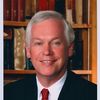Inside Higher Education just released the 2016 Survey of College and University Chief Academic Officers, conducted by Gallup and answered by 539 chief academic officers and provosts.
In several categories, the results are telling.
In a nutshell, almost all respondents stressed the continuing importance of the liberal arts. Interestingly, most recognized the hostile climate facing liberal arts with many academic officers expecting the pressure to continue. Many cited presidents, politicians and boards as principally responsible for the pressure they felt when defending the liberal arts.
Among the many categories surveyed, there were some differences among higher education groups. Far fewer public college and university chief academic officers believed that the financial crisis emerging from the Great Recession was behind them. Most agreed in both sectors that new funds for academic programs would come from reallocation of existing resources. When asked how they might build new funding sources to create fresh academic program opportunities, the chief academic officers planned to move heavily into online programming.
The most interesting "macro" question raised by Inside Higher Education was about the overall academic health and effectiveness of their institutions. While the private college provosts were the most enthusiastic, none said that their institutions were in failing academic health.
The conclusion reached after reading the survey results is in part dependent, of course, on the questions that these chief academic officers were asked to answer. It's entirely possible that a different set of questions might have resulted in a different impression of what chief academic officers were thinking. But what comes first to mind perhaps is that the world in which chief academic officers live is too narrow and shaped by campus parameters that do not always serve the institution well.
On any campus, there must be a clear understanding of the role of the chief academic officer, especially if the institution is not one of the giant university research complexes. In these cases - representing most of American higher education whether public or private - the provost is the second in authority to the president. By definition, the job requires a complex understanding of how a college works that takes the chief academic officer well behind the comfort zone of academics and into the world beyond the college gates.
The fault typically lies less with the provost than the environment in which the provost operates. It's embedded into the culture that sees the provost as a presiding colleague in a carefully nuanced environment in which the provost must lead by example and through consensus. It's a full-time job. The chief academic officer serves as a buffer, bearer of bad news, and interpreter of administrative and board decisions.
But does this focus serve the institution - especially the faculty - well?
A recent study by the Council of Independent Colleges suggested that many provosts do not want to move up to the job of president. Presidents must have confidence in their senior leadership. In the end, presidents must have a succession plan, starting with a clear understanding of how to support the professional growth of the provost.
It is at this level where the Inside Higher Education responses come into play. What are surprising in the IHE findings is how "tactical" most of the responses are, how narrowly the provosts interpret economic crisis as a cyclical recessionary moment rather than a sea change, and how uninspired they are in presenting solutions.
Let me be very clear at the outset. American higher education is blessed with great and distinguished chief academic officers. The fault lies squarely in how the position is defined and the enormous grind of holding what most believe is the most difficult job on a college campus.
If higher education is an academic enterprise, there must be a clearer consensus on the role played by the chief academic officer. In the 21st century, the most successful provosts must lead a dual charge to protect the integrity of bedrock principles like the liberal arts and serve as facilitators of change. It's no longer enough to know the academy well. The best academic officers will know the institution and how it fits into American higher education.
This includes following the money trail through admissions, the business office, financial aid, development, and alumni relations. It means helping to shape, understand, embrace and advocate an institutional vision offered by the president. It requires a perspective enlarged by extensive contacts with the research and program advances being made beyond the college gates.
Some faculty and staff believe that senior college administrators come and go, deciding simply to endure them until the next batch of leaders arrives. Given the length of tenure among senior leadership today, there is a good case to be made for this approach. But stable leadership is an invaluable asset to protect and advance the agenda of American colleges and universities. At most institutions, the provost is a critical player whose job needs clearer definition and broader authority.
